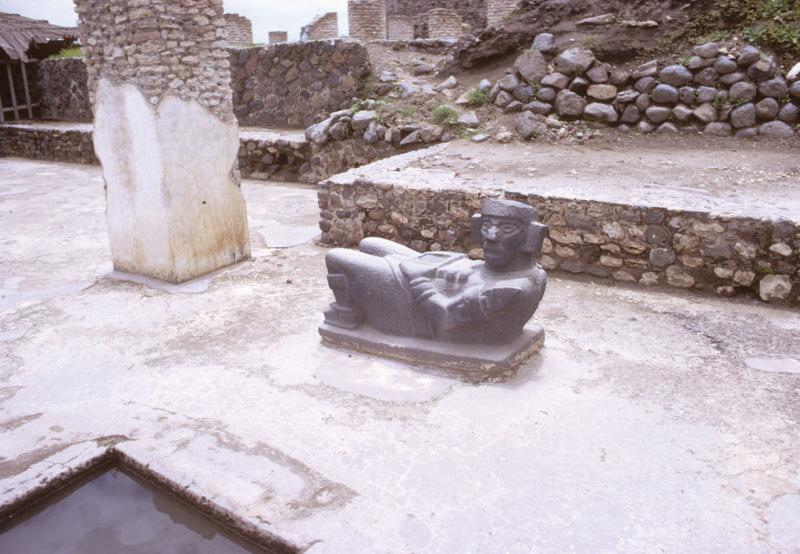Sacrificial altar in Tula, Mexico
A low statue of a reclining man sits in the middle of a stone courtyard. The statue is beyond a shallow pool and in front of a raised platform, next to a stone support column. Some archaeologists argue that statues of this design were built to receive the offerings of human sacrifice, namely the hearts of the victims. Tula, or Tollan, is the ancient capital of the pre-Columbian Toltec society. The city was in use from approximately AD 850 to 1150. The original city was larger than three square miles and supported a population larger than ten thousand people. The central plaza of the city has a large stepped pyramid dedicated to the god Quetzalcoatl. The pyramids of Tula are highly decorated and include images of humans and animals. The Toltec society inspired the Aztec empire that followed it in both architecture and artistry.

Creative Commons BY-NC-SA
This item has a Creative Commons license for re-use. This Creative Commons BY-NC-SA license means that you may use, remix, tweak, and build upon the work for non-commerical purposes as long as you credit the original creator and as long as you license your new creation using the same license. For more information about Creative Commons licensing and a link to the license, see full details at https://creativecommons.org/licenses/by-nc-sa/4.0/.